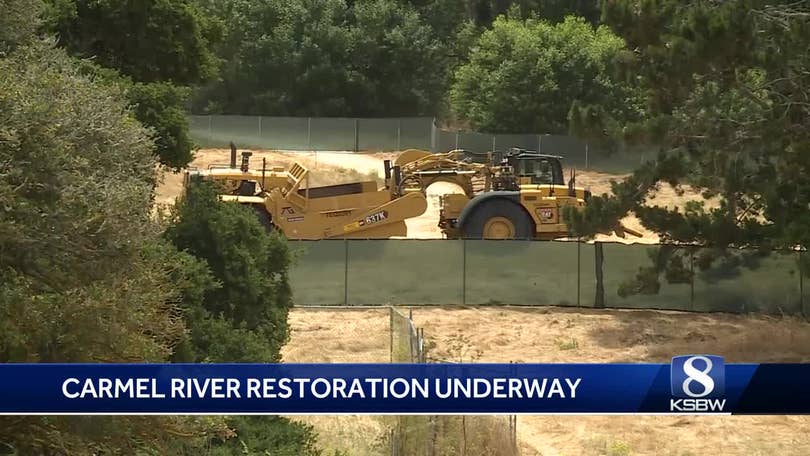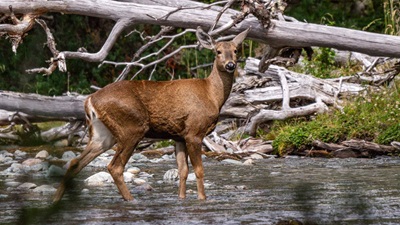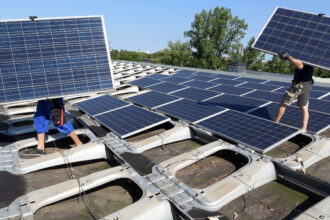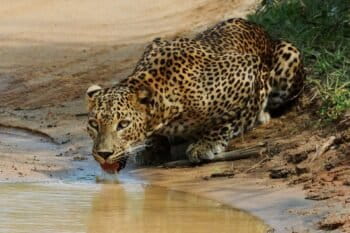Carmel Valley river restoration project aims to revive local wildlife habitat – KSBW

River Restoration Project in Carmel Valley: Advancing Sustainable Development Goals
Overview of the Restoration Initiative
A major river restoration project is currently underway in Carmel Valley, California, focusing on transforming the former Rancho Canada Golf Course into a thriving natural habitat. This project aims to restore healthy waterways to support the rare steelhead trout and other indigenous wildlife species.
The Monterey Regional Parks District, in collaboration with various agencies, has initiated this restoration at Palo Corona Regional Park. The project involves reconnecting the Carmel River to its historic floodplain, which has been altered over time, thereby enhancing ecological balance and community recreational opportunities.
Project Phases and Timeline
- Phase One: Currently in progress in the West section during dry months.
- Phase Two: Scheduled for next year in the East section.
- Phase Three: Final restoration touches expected to be completed by 2027.
Environmental and Community Impact
- Habitat Restoration: The project restores the natural connection between the Carmel River and its historic floodplain, which has been restricted, leading to a decline in steelhead trout populations.
- Endangered Species Protection: The restoration supports the critical habitat of the endangered steelhead trout, contributing directly to SDG 14 (Life Below Water) and SDG 15 (Life on Land).
- Flood Risk Reduction: By restoring natural floodplains, the project reduces flood risks for surrounding communities, aligning with SDG 11 (Sustainable Cities and Communities).
- Community Engagement and Recreation: New recreational opportunities are being created, promoting well-being and sustainable use of natural resources, supporting SDG 3 (Good Health and Well-being) and SDG 13 (Climate Action).
Stakeholder Involvement and Public Education
Jacqueline Breton, a Resource Conservation Specialist, emphasized the dual benefits of the project: “This project will be restoring the critical habitat for this endangered species while simultaneously reducing flood risk for the surrounding community.”
Local volunteer Pat Herro plays a key role in educating the public about the restoration, highlighting the transformation from a golf course back to a natural habitat. Herro stated, “It’s not a golf course, it’s more like what nature intended in the first place. That’s what this restoration is about.”
The Monterey Regional Parks District encourages the public to continue using the trails during construction, fostering community involvement and awareness.
Alignment with Sustainable Development Goals (SDGs)
- SDG 3 – Good Health and Well-being: Enhancing green spaces and recreational areas promotes physical and mental health.
- SDG 11 – Sustainable Cities and Communities: Reducing flood risk and improving natural habitats contribute to resilient and sustainable urban environments.
- SDG 13 – Climate Action: Restoring natural ecosystems aids in climate adaptation and mitigation efforts.
- SDG 14 – Life Below Water: Protecting aquatic species such as steelhead trout supports biodiversity and healthy aquatic ecosystems.
- SDG 15 – Life on Land: Rehabilitating terrestrial habitats fosters biodiversity conservation and ecosystem restoration.
1. Sustainable Development Goals (SDGs) Addressed or Connected
- SDG 6: Clean Water and Sanitation – The restoration of the Carmel River and its floodplain aims to improve water quality and ecosystem health.
- SDG 11: Sustainable Cities and Communities – Creating new recreational opportunities and reducing flood risk contributes to sustainable community development.
- SDG 14: Life Below Water – Restoring habitat for the endangered steelhead trout supports aquatic biodiversity conservation.
- SDG 15: Life on Land – The transformation of a golf course into a natural habitat promotes terrestrial ecosystem restoration and biodiversity.
2. Specific Targets Under Those SDGs
- SDG 6
- Target 6.6: Protect and restore water-related ecosystems, including rivers and wetlands.
- SDG 11
- Target 11.5: Reduce the adverse effects of natural disasters, including floods, on communities.
- Target 11.7: Provide universal access to safe, inclusive, and accessible green and public spaces.
- SDG 14
- Target 14.2: Sustainably manage and protect marine and freshwater ecosystems to avoid significant adverse impacts.
- SDG 15
- Target 15.1: Ensure the conservation, restoration, and sustainable use of terrestrial and freshwater ecosystems.
- Target 15.5: Take urgent action to reduce the degradation of natural habitats and halt biodiversity loss.
3. Indicators Mentioned or Implied to Measure Progress
- Indicator for SDG 6.6: Proportion of water bodies with good ambient water quality and extent of water-related ecosystems restored (implied by the river restoration and reconnection to floodplain).
- Indicator for SDG 11.5: Number of deaths, missing persons, and directly affected persons attributed to disasters per 100,000 population (implied by flood risk reduction).
- Indicator for SDG 11.7: Proportion of urban public spaces that are safe, inclusive, and accessible (implied by new recreational opportunities and trail use).
- Indicator for SDG 14.2: Proportion of national exclusive economic zones managed using ecosystem-based approaches (implied by habitat restoration for steelhead trout).
- Indicator for SDG 15.1 and 15.5: Forest area as a proportion of total land area and Red List Index (implied by habitat restoration and protection of endangered species).
4. Table of SDGs, Targets, and Indicators
| SDGs | Targets | Indicators |
|---|---|---|
| SDG 6: Clean Water and Sanitation | 6.6: Protect and restore water-related ecosystems, including rivers and wetlands. | Proportion of water bodies with good ambient water quality; extent of water-related ecosystems restored. |
| SDG 11: Sustainable Cities and Communities |
11.5: Reduce the adverse effects of natural disasters, including floods. 11.7: Provide universal access to safe, inclusive, and accessible green and public spaces. |
Number of deaths, missing persons, and directly affected persons attributed to disasters per 100,000 population. Proportion of urban public spaces that are safe, inclusive, and accessible. |
| SDG 14: Life Below Water | 14.2: Sustainably manage and protect marine and freshwater ecosystems. | Proportion of national exclusive economic zones managed using ecosystem-based approaches. |
| SDG 15: Life on Land |
15.1: Ensure conservation, restoration, and sustainable use of terrestrial and freshwater ecosystems. 15.5: Take urgent action to reduce degradation of natural habitats and halt biodiversity loss. |
Forest area as a proportion of total land area; Red List Index for endangered species. |
Source: ksbw.com

What is Your Reaction?
 Like
0
Like
0
 Dislike
0
Dislike
0
 Love
0
Love
0
 Funny
0
Funny
0
 Angry
0
Angry
0
 Sad
0
Sad
0
 Wow
0
Wow
0















































































